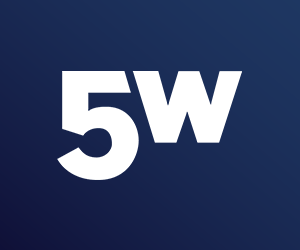Media interactions can make or break an organization’s reputation, yet many companies rely on technical experts and legal professionals who may lack formal communications training to speak with journalists. A 2023 Muck Rack study found that 65% of PR professionals consider media training their most valuable skill, highlighting its critical importance. For organizations looking to maintain consistent messaging and protect their interests, preparing non-communications staff members requires a structured approach combining practical techniques, legal awareness, and ongoing support systems. This comprehensive guide outlines proven methods to equip your technical and legal teams with the skills they need to handle media interactions confidently and professionally.
Building a Foundation: Core Media Training Components
The first step in preparing non-communications teams involves establishing fundamental media skills. Start by assessing current capabilities through brief mock interviews to identify areas needing improvement. Create a baseline training program that includes:
Message development workshops teach participants to craft clear, quotable statements that align with organizational goals. Technical experts often struggle to translate complex information into digestible content. Practice sessions should focus on eliminating jargon and creating compelling soundbites that resonate with general audiences.
Interview technique training introduces basic concepts like maintaining eye contact, proper posture, and voice modulation. According to the Public Relations Society of America (PRSA), 93% of message interpretation comes from non-verbal cues, making body language mastery essential.
Regular practice sessions using realistic scenarios help participants apply these skills under pressure. Record mock interviews and provide constructive feedback, allowing team members to see themselves in action and make improvements.
Legal Guidelines and Risk Management
When non-communications staff interact with media, understanding legal boundaries becomes paramount. Establish clear protocols around:
Confidentiality requirements, including what information can be shared publicly versus what must remain private. This includes customer data, intellectual property, and ongoing legal matters.
Regulatory compliance specific to your industry. Financial services firms must adhere to SEC guidelines, while healthcare organizations need to maintain HIPAA compliance during media interactions.
Crisis communication procedures that outline steps for handling sensitive situations without creating legal exposure. Define escalation paths and identify when to defer to legal counsel or communications professionals.
Document these guidelines in a readily accessible format and review them regularly with participating team members. Consider creating quick-reference cards with key points for use during interviews.
Message Development for Technical Teams
Engineers and legal professionals often possess deep technical knowledge that needs translation for general audiences. Implement these strategies:
Create message hierarchies that organize information from high-level concepts to supporting details. This helps technical experts lead with the most newsworthy or relevant information.
Develop bridging techniques to redirect technical conversations toward key messages. Practice phrases like “The important point is…” or “What this means for our customers…”
Use analogies and real-world examples to make complex concepts accessible. Work with technical teams to identify comparisons that accurately represent their work while remaining easy to understand.
Handling Challenging Questions
Prepare non-communications teams for difficult situations through:
Anticipatory planning sessions that identify potential challenging questions and develop appropriate responses. Create a database of practiced answers to common inquiries.
“Block and bridge” technique training to acknowledge questions while steering conversations toward key messages. This maintains control without appearing evasive.
Stress management strategies to help maintain composure during tough interviews. Deep breathing exercises and mental preparation techniques prove valuable under pressure.
Cross-Departmental Collaboration Framework
Success requires ongoing coordination between communications, legal, and technical departments. Implement:
Regular coordination meetings to align messaging and share upcoming media opportunities. This ensures consistent organizational voice across all spokespersons.
Feedback loops that capture lessons learned from each media interaction. Use these insights to refine training programs and update guidelines.
Mentorship programs pairing experienced communicators with technical experts. This provides ongoing support and development opportunities.
Measuring Success and Continuous Improvement
Track progress through:
Media coverage analysis to evaluate message effectiveness and spokesperson performance. Monitor tone, accuracy, and key message inclusion.
Participant feedback surveys to identify training program strengths and areas for improvement. Make adjustments based on real user experiences.
Regular skill assessments to ensure maintained readiness. Schedule refresher sessions as needed.
Technology and Tools Support
Leverage available resources:
Media monitoring platforms to track coverage and analyze performance. These tools provide valuable insights for program refinement.
Recording equipment for practice sessions and performance review. High-quality video feedback helps participants identify areas for improvement.
Online training modules for ongoing skill development. These allow flexible learning schedules for busy professionals.
Conclusion
Preparing non-communications teams for media interactions requires dedication and systematic effort. Focus on building fundamental skills, establishing clear guidelines, and maintaining strong cross-departmental collaboration. Regular practice and feedback help technical experts become confident spokespersons while protecting organizational interests.
Start by assessing current capabilities and implementing basic training components. Gradually expand the program based on participant needs and media interaction requirements. Remember that effective media representation is an ongoing process rather than a one-time achievement. With proper preparation and support, your technical and legal teams can become valuable assets in your organization’s media relations efforts.




